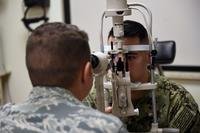The big news for military pay in 2011 is that the decade-long trend of large across-the-board pay increases for the military has ended - with a 1.4 percent thud. Although not unexpected, the news is still rather disappointing to many servicemembers who have come to expect a decent size raise each year.
In addition to the minimal pay increase, servicemembers will see a slight down turn in Basic Allowance for Housing, virtually unchanged Basic Allowance for Subsistence rates, and a drop in active duty cost-of-living-adjustments (COLA) (for those stationed in high-cost military housing areas).
As reported on Military.com, this year’s raise – the smallest since 1962 – was low because, according to the government’s Employment Cost Index, military wages have achieved parity with civilian pay. Many servicemembers and veterans would argue, and rightly so, that the ECI does not take the special burden and inherent risks of military service into account.
Other factors affecting the size of the 2011 military pay raise include the current economic situation and the pressure on Congress to reduce the Federal deficit by reducing the cost of military personnel. At one point it was feared that military members would see their military pay frozen along with the rest of Federal civilian employees.
Military allowances for housing, subsistence, and cost-of-living are going to be relatively flat, mainly due to the way the Federal Government measures the economic factors which impact the military. BAH is determined by the cost of rent in each of the over 400 military housing areas. Most of these MHAs were impacted by the national housing crisis.
The 2011 Basic Allowance for Subsistence rates increased by about 80 cents a month. BAS is determined by the national average cost of food. The annual adjustment is based on the USDA food cost index.
The annual active duty COLA is determined by localized surveys, which look at several factors which include transportation, goods and services (which includes food at home, food away from home, tobacco, alcohol, furnishings and household operations, clothing, domestic service, medical care, personal care, and recreation), and sales taxes.
As reflected in the comments posted to this blog by hundreds of servicemembers, the factors the government uses to determine military pay and allowance rates seldom match the real world.
On an up note, there are no reductions in Special Pay and most servicemembers will not feel the impact of the reduction in BAH due to "Rate Protection." Rate protection keeps a members BAH at the higher rate until they move or there status changes in some way. And, for the time being, it appears there is no plan to freeze military pay in 2012.
View the new rates:



